
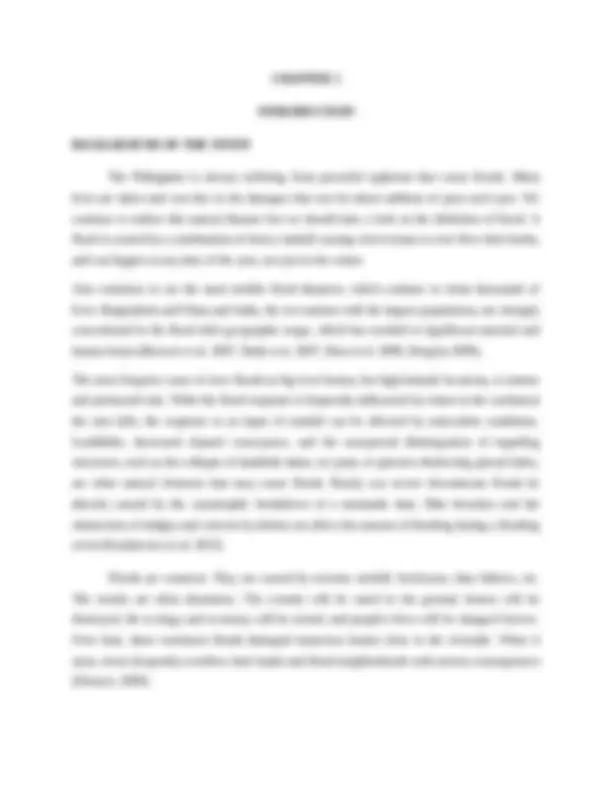
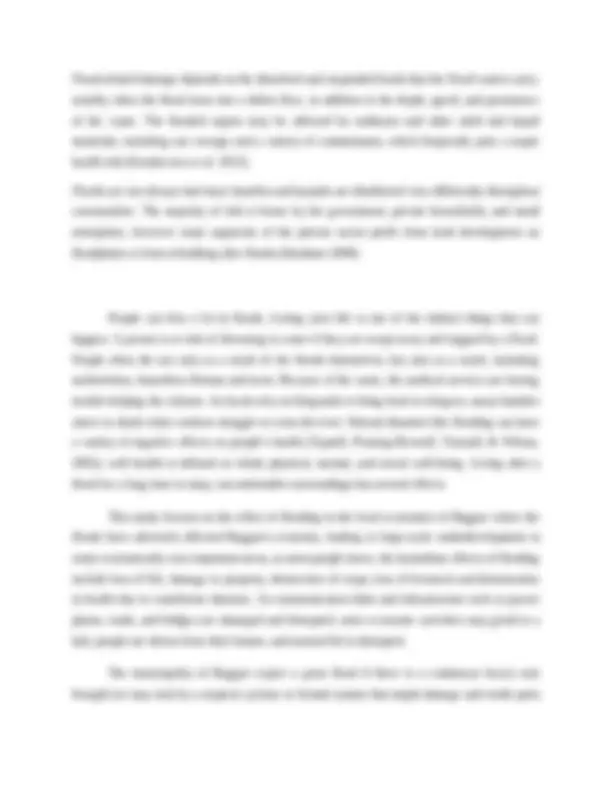
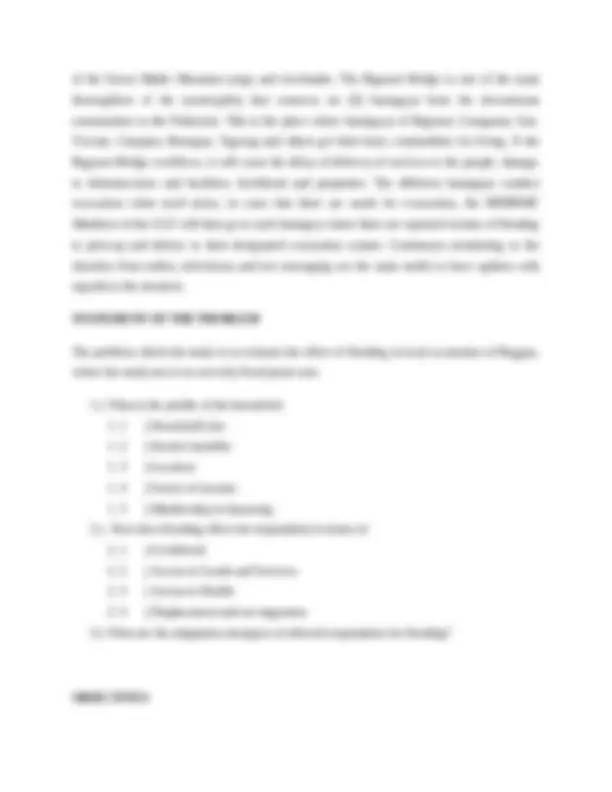
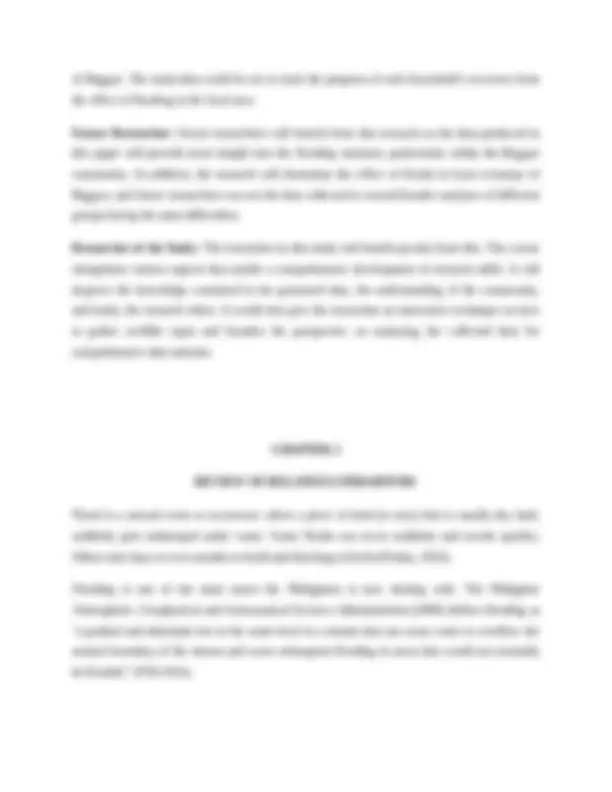
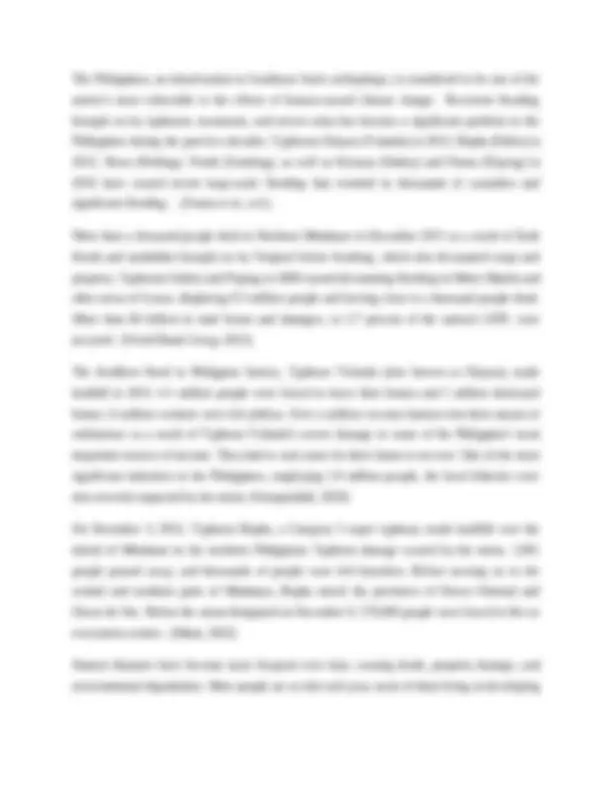
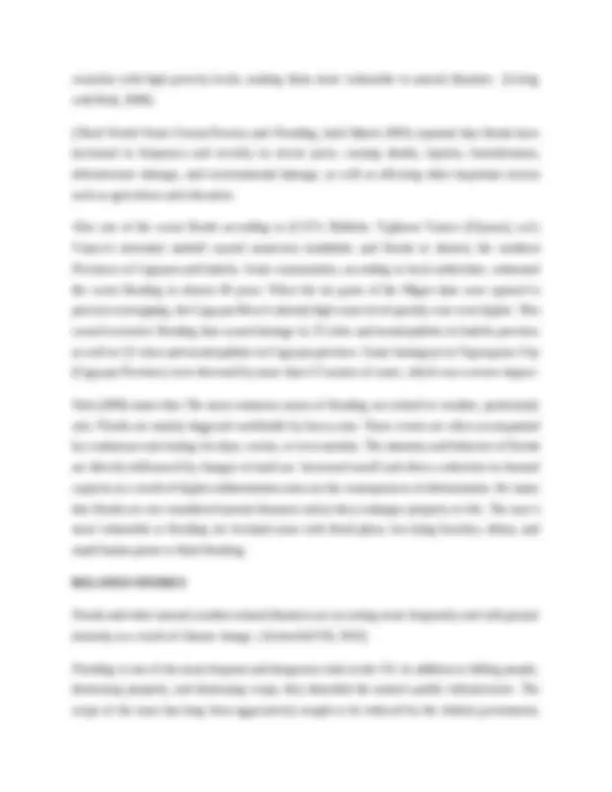

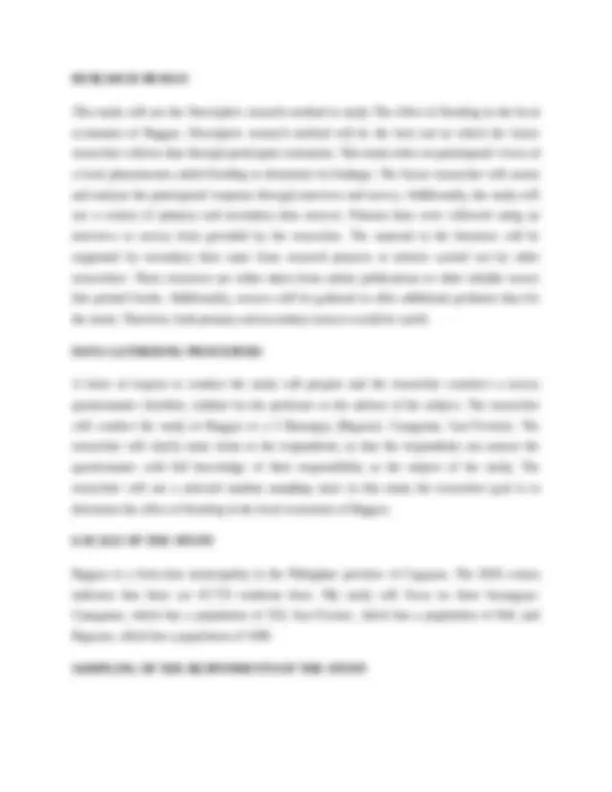
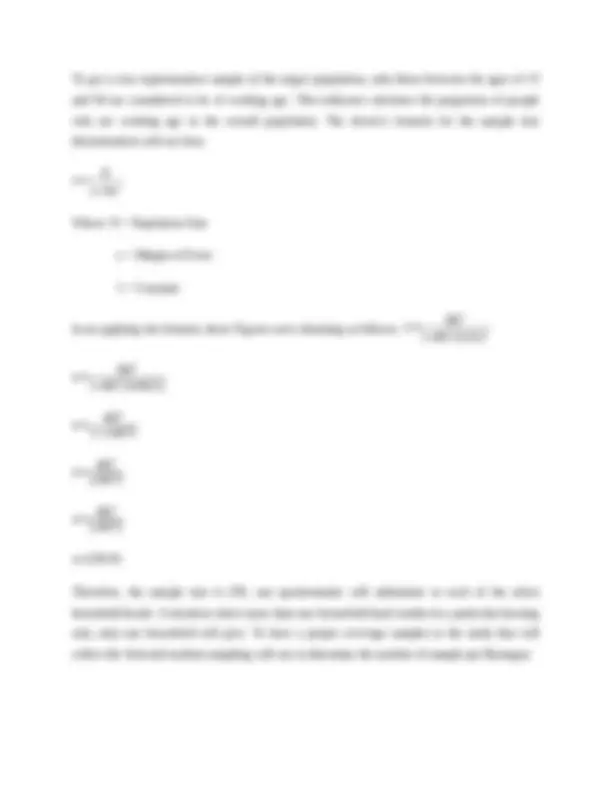
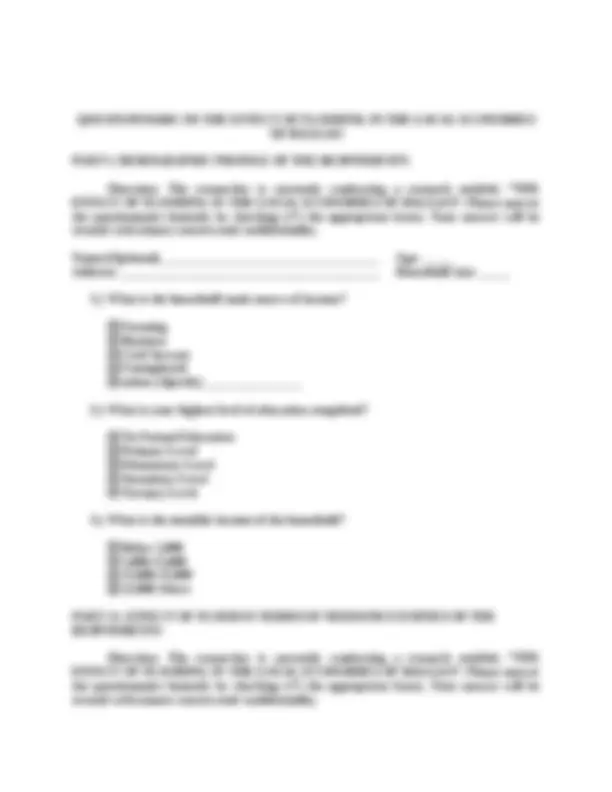
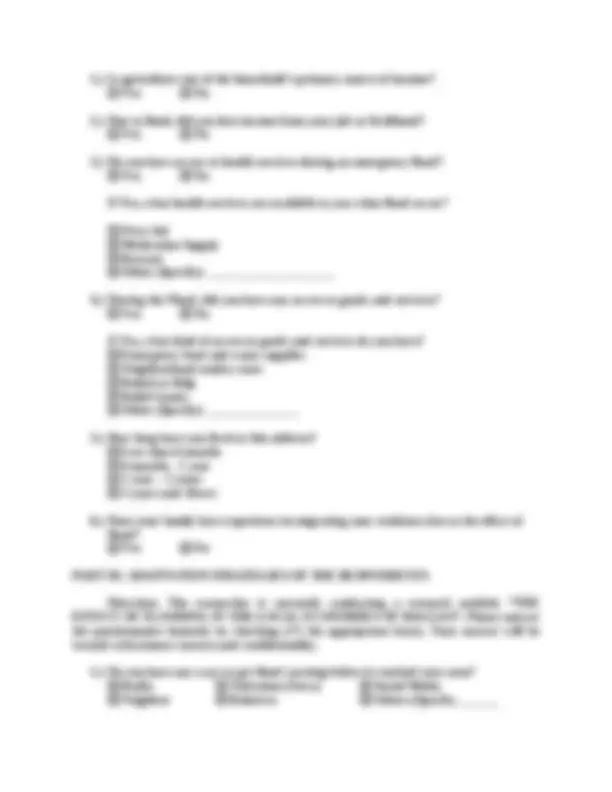
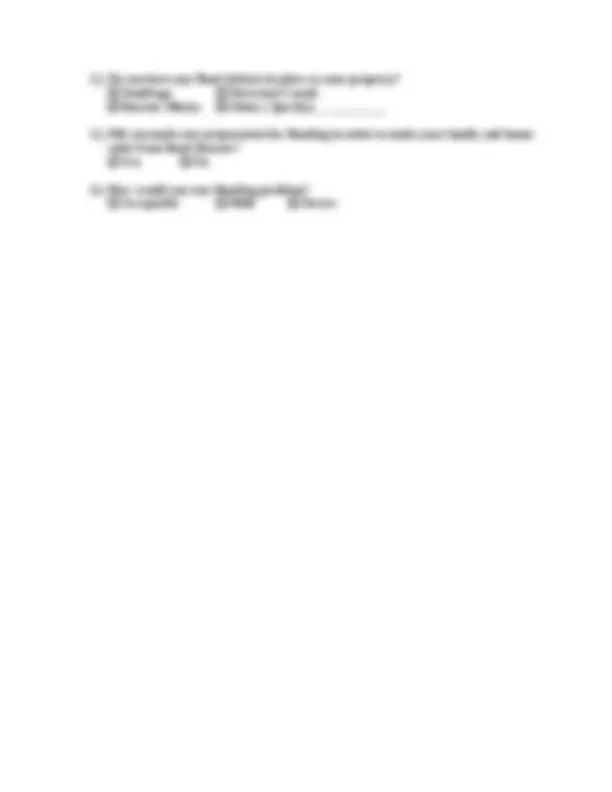


Study with the several resources on Docsity

Earn points by helping other students or get them with a premium plan


Prepare for your exams
Study with the several resources on Docsity

Earn points to download
Earn points by helping other students or get them with a premium plan
Community
Ask the community for help and clear up your study doubts
Discover the best universities in your country according to Docsity users
Free resources
Download our free guides on studying techniques, anxiety management strategies, and thesis advice from Docsity tutors
This research is only chapter 1-3 with a questionnaire of it. This is a thesis proposal.
Typology: Thesis
1 / 20

This page cannot be seen from the preview
Don't miss anything!













A Thesis Proposal Presented to the Faculty of the Economics Program Department of Social Science, College of Arts and Sciences, Cagayan State University, Carig, Tuguegarao City In Partial Fulfillment of the Subject Thesis 1A leading to the degree Bachelor of Arts in Economics, First Semester School Year 2022- By MILDRED P. DOMINGO November 2022
TITLE PAGE TABLE OF CONTENTS CHAPTER 1: INTRODUCTION Background of the Study Statement of the Problem Objectives Hypothesis of the Study Scope and Limitation of the Study Definition of Key Terms Significance of the Study CHAPTER 2: REVIEW OF RELATED LITERATURE AND STUDIES Literature Review Related Studies Conceptual Framework CHAPTER 3: RESEARCH METODOLOGY Research Design Population and Respondents of the Study Sampling Procedure and Sample Size Concepts, Variables and Indicators Research Instrument Data Collection Procedure Data Processing Data Analysis
Flood-related damage depends on the dissolved and suspended loads that the flood waters carry, notably when the flood turns into a debris flow, in addition to the depth, speed, and persistence of the water. The flooded region may be affected by sediment and other solid and liquid materials, including raw sewage and a variety of contaminants, which frequently pose a major health risk (Kundzewicz et al. 2012). Floods are not always bad since benefits and hazards are distributed very differently throughout communities. The majority of risk is borne by the government, private households, and small enterprises, however some segments of the private sector profit from land development on floodplains or from rebuilding after floods (Handmer 2008). People can lose a lot in floods. Losing your life is one of the riskiest things that can happen. A person is at risk of drowning in water if they are swept away and trapped by a flood. People often die not only as a result of the floods themselves, but also as a result, including malnutrition, hazardous flotsam and more. Because of the water, the medical services are having trouble helping the citizens. As locals rely on lifeguards to bring food to refugees, many families starve to death when workers struggle to cross the river. Natural disasters like flooding can have a variety of negative effects on people's health (Tapsell, Penning-Rowsell, Tunstall, & Wilson, 2002); well health is defined as whole physical, mental, and social well-being. Living after a flood for a long time in rainy, uncomfortable surroundings has several effects. This study focuses on the effect of flooding in the local economies of Baggao where the floods have adversely affected Baggao's economy, leading to large-scale underdevelopment in some economically very important areas, as most people know, the immediate effects of flooding include loss of life, damage to property, destruction of crops, loss of livestock and deterioration in health due to waterborne diseases. As communication links and infrastructure such as power plants, roads, and bridges are damaged and disrupted, some economic activities may grind to a halt, people are driven from their homes, and normal life is disrupted. The municipality of Baggao expect a great flood if there is a continuous heavy rain brought (or may not) by a tropical cyclone or frontal system that might damage and erode parts
of the Sierra Madre Mountain range and riverbanks. The Bagunot Bridge is one of the main thoroughfare of the municipality that connects six (6) barangays from the downstream communities to the Poblacion. This is the place where barangays of Bagunot, Canagatan, San- Vicente, Carupian, Bunugan, Taguing and others get their basic commodities for living. If the Bagunot Bridge overflows, it will cause the delay of delivery of services to the people, damage to infrastructures and facilities, livelihood and properties. The different barangays conduct evacuation when need arises, in cases that there are needs for evacuation, the MDRRMC Members of the LGU will then go to each barangay where there are reported victims of flooding to pick-up and deliver to their designated evacuation centers. Continuous monitoring to the situation from radios, televisions and text messaging are the main media to have updates with regards to the situation. STATEMENT OF THE PROBLEM The problem which the study is to evaluate the effect of flooding in local economies of Baggao, where the study area is in severely flood prone area 1.) What is the profile of the household:
Flooding - is the most common type of natural disaster and occurs when an overflow of water inundates normally dry land. Flooding is often caused by heavy rainfall, rapid snowmelt, or storm surge from tropical cyclones or tsunamis in coastal areas. Household - people living in the same house, regardless of their relationship. Livelihood - refers to the full range of media used by individuals, families and communities, to make them a livelihood, such as salary income, agriculture, fishing, food gathering, other natural resource based livelihoods, petty trade and bartering. Heath - a condition of complete physical, mental, and social wellbeing and not only the absence o f disease. Services - A service is not a tangible or physical entity, but consumers still desire it Goods- is a tangible item that consumers desire or own. Migration- The movement of a person from one place or country, locality, place of residence, etc., to settle in another. SIGNIFICANCE OF THE STUDY The significance of this study is to provide relevant data and knowledge about the chosen topic from the respondents, as well as current research and related websites wished for the expected significance to the people. The results of this study are helpful to the following: Resident of Barangay Canagatan, San-Vicente and Bagunot : Residents would be the main participants of the study because the results would show what steps should be taken to address the issue. Residents of the area will find it significant because it can assist their community's flooding problem. LGU BAGGAO : This research will also benefit local government unit, it provides information and data that may help solve a community problem, this can help them develop research-based projects that will effectively alleviate the problem. This research will benefit the local economies
of Baggao. The study data could be use to track the progress of each household’s recovery from the effect of flooding in the local area. Future Researcher: Future researchers will benefit from this research as the data produced in this paper will provide more insight into the flooding situation, particularly within the Baggao community. In addition, the research will determine the effect of floods in local economy of Baggao, and future researchers can use the data collected to extend broader analyzes of different groups facing the same difficulties. Researcher of the Study: The researcher in this study will benefit greatly from this. The course strengthens various aspects that enable a comprehensive development of research skills. It will improve the knowledge contained in the generated data, the understanding of the community, and lastly, the research ethics. It would also give the researcher an innovative technique on how to gather credible input and broaden the perspective on analyzing the collected data for comprehensive data analysis. CHAPTER 2 REVIEW OF RELATED LITERARTURE Flood is a natural event or occurrence where a piece of land (or area) that is usually dry land, suddenly gets submerged under water. Some floods can occur suddenly and recede quickly. Others take days or even months to build and discharge (eSchoolToday, 2022). Flooding is one of the main issues the Philippines is now dealing with. The Philippine Atmospheric, Geophysical and Astronomical Services Administration (2006) defines flooding as "a gradual and abnormal rise in the water level in a stream that can cause water to overflow the normal boundary of the stream and cause subsequent flooding in areas that would not normally be flooded." (PAGASA).
countries with high poverty levels, making them more vulnerable to natural disasters. (Living with Risk, 2006). (Third World Water Forum:Poverty and Flooding, held March 2003) reported that floods have increased in frequency and severity in recent years, causing deaths, injuries, homelessness, infrastructure damage, and environmental damage, as well as affecting other important sectors such as agriculture and education. Also one of the worst floods according to (CAT-i Bulletin: Typhoon Vamco (Ulysses), n.d.) Vamco's torrential rainfall caused numerous landslides and floods to destroy the northern Provinces of Cagayan and Isabela. Some communities, according to local authorities, witnessed the worst flooding in almost 40 years. When the six gates of the Magat dam were opened to prevent overtopping, the Cagayan River's already high water level quickly rose even higher. This caused extensive flooding that caused damage in 25 cities and municipalities in Isabela province as well as 22 cities and municipalities in Cagayan province. Some barangays in Tuguegarao City (Cagayan Province) were drowned by more than 4.5 meters of water, which was a severe impact. Nott (2006) states that The most common causes of flooding are related to weather, particularly rain. Floods are mainly triggered worldwide by heavy rain. These events are often accompanied by continuous rain lasting for days, weeks, or even months. The intensity and behavior of floods are directly influenced by changes in land use. Increased runoff and often a reduction in channel capacity as a result of higher sedimentation rates are the consequences of deforestation. He states that floods are not considered natural disasters unless they endanger property or life. The area’s most vulnerable to flooding are lowland areas with flood plans, low-lying beaches, deltas, and small basins prone to flash flooding. RELATED STUDIES Floods and other natural weather-related disasters are occurring more frequently and with greater intensity as a result of climate change. (ActionAid UK, 2022) Flooding is one of the most frequent and dangerous risks in the US. In addition to killing people, destroying property, and destroying crops, they demolish the nation's public infrastructure. The scope of the issue has long been aggressively sought to be reduced by the federal government,
but in recent decades, the economic harm brought on by flooding has worsened (Li and Landry, 2018). Citizens in all 188 countries are susceptible to flood threats, which provide a nearly global threat. East Asia has the biggest proportion of flood-exposed inhabitants at 668 million, or nearly 28% of its total population. Between 9% and 20% of people are exposed to flooding in Sub-Saharan Africa, Europe, Central Asia, the Middle East, North Africa, Latin America, and the Caribbean. Furthermore, only 9 of the 2,084 subnational regions that we examined have less than 1% of their population at danger from flooding. The majority of flood-exposed individuals, or about 70% (1.24 billion), reside in South and East Asia, with China and India alone making up more than one-third of the global exposure. Additionally, more than two-thirds of the population in some subnational areas of South and East Asia are at risk from flooding. (Jun Rentschler,2022) The poorest households—those with almost no savings and no access to support systems—often suffer the most devastating long-term effects of floods. It is possible to pinpoint areas where floods would have long-lasting detrimental effects on livelihoods and well-being by taking the aspect of poverty into account. According to this metric, sub-Saharan African nations are most at risk since, according to our estimates, at least 71 million of the region's 171 million flood- exposed residents live in severe poverty (i.e., subsist on less than $1.90 per day). 587 million poor people worldwide, including 132 million people who live in extreme poverty, are at risk of flooding. (A Href=/Team/Jun-Rentschler Hreflang=En>Jun RentschlerMelda Salhab, 2020). The susceptibility of people to flooding has risen due to global population growth acceleration and changes in land use patterns. Floods can cause direct fatalities, morbidities, indirect evictions, widespread damage to crops, infrastructure, and property, and they can also cause serious injury (Doocy et al., 2013) One of the nation’s most vulnerable to flooding is Bangladesh. In terms of lost lives, property, livelihoods, and development gains, floods have a significant financial impact on Bangladesh. This low-lying, coastal nation, which is traversed by many rivers, is extremely sensitive to climate change, as well as to rises in sea level and rainfall that lead to flooding. (Countries – Flood Resilience Portal, n.d.)
Floods are also impacted by the characteristics and status of the soil (permeability, soil moisture content, and its vertical distribution), the rate of urbanization, and the presence of dikes, dams, and reservoirs in the drainage basin. River flooding may occur simultaneously with storm surge or extremely high tides close to the sea (Brakenridge et al. 2013). CONCEPTUAL FRAMEWORK The conceptual framework in form of an Input-Process-Output (IPO) Chart for the study in the effect of flooding in the local economies of Baggao in Barangay (Bagunot, Canagatan, San- Vicente) the researcher will conduct interviews to ensure the nature of community aim to know the strategy in dealing with flood in the area. CHAPTER 3 METHODOLOGY
Profile of the respondets according to: Name Address Household size Income Monthly Source of Income Membership to Financing
1.) Present a letter 2.) Conduct an Interview 3.) Organize the respondent's responses 4.) Analyze and interpret the data gather.
How Flooding effect the local economies in Baggao specially in three Barangay ( Bagunot, Canagatan, San- Vicente)
This study will use the Descriptive research method to study The effect of flooding in the local economies of Baggao. Descriptive research method will be the best sort in which the future researcher collects data through participant comments. This study relies on participants' views of a local phenomenon called flooding to determine its findings. The future researcher will assess and analyze the participants' response through interview and survey. Additionally, the study will use a variety of primary and secondary data sources. Primary data were collected using an interview or survey form provided by the researcher. The material in the literature will be supported by secondary data came from research projects or articles carried out by other researchers. These resources are either taken from online publications or other reliable source like printed books. Additionally, sources will be gathered to offer additional pertinent data for the study. Therefore, both primary and secondary sources would be useful. DATA GATHERING PROCEDURE A letter of request to conduct the study will prepare and the researcher construct a survey questionnaire checklist, validate by the professor or the adviser of the subject. The researcher will conduct the study in Baggao at a 3 Barangay (Bagunot, Canagatan, San-Vicente). The researcher will clarify some terms to the respondents, so that the respondents can answer the questionnaire with full knowledge of their responsibility as the subject of the study. The researcher will use a selected random sampling since in this study the researcher goal is to determine the effect of flooding in the local economies of Baggao. LOCALE OF THE STUDY Baggao is a first-class municipality in the Philippine province of Cagayan. The 2020 census indicates that there are 87,753 residents there. My study will focus on three barangays: Canagatan, which has a population of 532; San-Vicente, which has a population of 644; and Bagunot, which has a population of 1466. SAMPLING OF THE RESPONDENTS OF THE STUDY
The researcher will use survey questionnaire as the principal tool in gathering data the researcher will conduct an interview using prepare survey questionnaire. For this study it consists of: PART I. What is the profile of the household: 1.1) Household size: 1.2) Income monthly: 1.3) Location: 1.4) Source of income: 1.5) Membership to financing: PART II. How does flooding effect the respondents in terms of: 2.1) Livelihood: 2.2) Access to Goods and Services: 2.3) Access to Health: 2.4) Displacement and out migration: PART III. What are the adaptation strategies of affected respondents for flooding?
1.) Is agriculture one of the household’s primary source of income? Yes No 2.) Due to flood, did you lose income from your job or livelihood? Yes No 3.) Do you have access to health services during an emergency flood? Yes No If Yes, what health services are available to you when flood occur? First Aid Medication Supply Rescuer Other (Specify): _____________________ 4.) During the Flood, did you have any access to goods and services? Yes No If Yes, what kind of access to goods and services do you have? Emergency food and water supplies Neighborhood sundry store Relatives Help Relief Goods Other (Specify): _______________ 5.) How long have you lived at this address? Less than 6 months 6 months - 1 year 1 year – 5 years 5 years and Above 6.) Does your family have experience in migrating your residence due to the effect of flood? Yes No PART III. ADAPTATION STRATEGIES OF THE RESPONDENTS Direction: The researcher is currently conducting a research entitled, “THE EFFECT OF FLOODING IN THE LOCAL ECONOMIES OF BAGGAO”. Please answer the questionnaire honestly by checking ( ) the appropriate boxes. Your answer will be treated with utmost concern and confidentiality. 1.) Do you have any ways to get flood warning before it reached your area? Radio Television (News) Social Media Neighbor Relatives Others (Specify: ______
2.) Do you have any flood defense in place at your property? Sandbags Diversion Canals Barrier/ Blocks Other ( Specify): ___________ 3.) Did you make any preparation for flooding in order to make your family and home safer from flood disaster? Yes No 4.) How would you rate flooding problem? Acceptable Mild Severe